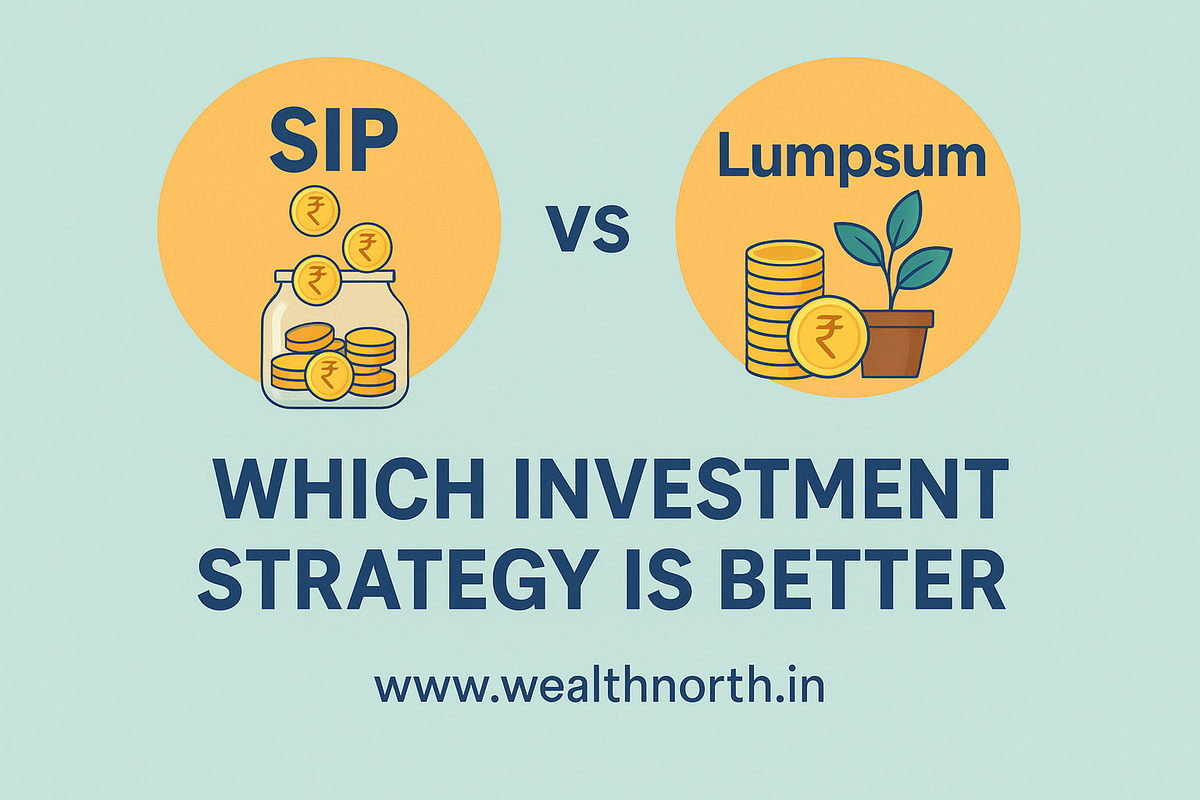SIP vs Lumpsum: Which Investment Strategy is Better in 2025?

Current global financial markets are experiencing heightened volatility and inflation risks due to escalating tariff wars among major economies. Investors are facing an uncertain environment where market timing has become increasingly difficult. In such times, choosing the right investment strategy — whether Systematic Investment Plans (SIPs) or Lumpsum Investments — becomes even more crucial for achieving financial stability and growth.
What is SIP?
Systematic Investment Plan (SIP) is a disciplined method of investing a fixed amount regularly (monthly or quarterly) into mutual funds. SIPs are ideal for investors who want to build wealth gradually, reduce the impact of market volatility, and cultivate a savings habit.
- Rupee Cost Averaging: Helps average the purchase cost over time, reducing the impact of market fluctuations.
- Disciplined Saving: Encourages regular investment, building long-term wealth.
- Flexibility: Start SIPs with amounts as low as ₹500 per month.
What is Lumpsum Investment?
Lumpsum investment involves investing a large amount of money at once in a mutual fund scheme. It is suitable for investors with a large amount of surplus funds, typically after receiving bonuses, inheritance, or selling an asset.
- Immediate Market Exposure: Beneficial during market uptrends.
- Potential for Higher Returns: If invested at the right time, lumpsum can yield better returns compared to SIPs.
- Ideal for Long-Term Goals: Helps in compounding wealth faster if invested early.
Key Differences Between SIP and Lumpsum
| Feature | SIP | Lumpsum |
|---|---|---|
| Investment Mode | Periodic (Monthly/Quarterly) | One-time Investment |
| Market Timing Risk | Lower (Spread out over time) | Higher (Depends on entry point) |
| Best for | Salaried Individuals, New Investors | Investors with Surplus Funds |
| Return Potential | Steady and averaged over time | Potentially higher if timed correctly |
Which Strategy is Better in 2025?
Given the market uncertainties and inflation risks expected in 2025, a balanced approach is recommended. SIP remains the safer bet for most retail investors due to its discipline and averaging benefits. However, if you have a significant lump sum and expect the markets to perform well, a partial lumpsum investment followed by SIPs can be a smart strategy.
Pro Tip: If you receive a large amount (bonus, gift, etc.), consider investing part of it immediately and staggering the rest via monthly SIPs over 6–12 months. This hybrid approach minimizes market timing risk.
Start Your Investment Journey Today
At Wealth North, we help you make smarter financial decisions. Whether you prefer SIPs or Lumpsum investments, our calculators and expert-curated mutual fund selections are designed to guide you towards your financial goals.
Conclusion
Both SIP and Lumpsum have their advantages, and the right choice depends on your financial situation, risk tolerance, and market conditions. In 2025, with economic shifts, inflationary pressures, and global tariff wars impacting markets, staying disciplined and adaptable will be key to successful investing. Start early, stay consistent, and watch your wealth grow!
Related Reads
Quick Glossary
Rupee Cost Averaging
Investing a fixed amount at regular intervals, which smooths out market ups and downs and reduces the risk of bad timing.
XIRR Return
Extended Internal Rate of Return — a way to accurately calculate annualized returns when investments and redemptions happen at different times.
Disclaimer
- Mutual Fund investments are subject to market risks.
- Please read all scheme-related documents carefully before investing.
- Past performance is not indicative of future returns.
- Investors are advised to consult their financial advisor before making any investment decisions.
- This blog is for informational purposes only and does not constitute an offer or solicitation to invest in any financial product.
- Wealth North does not guarantee returns or assume responsibility for investment outcomes.
